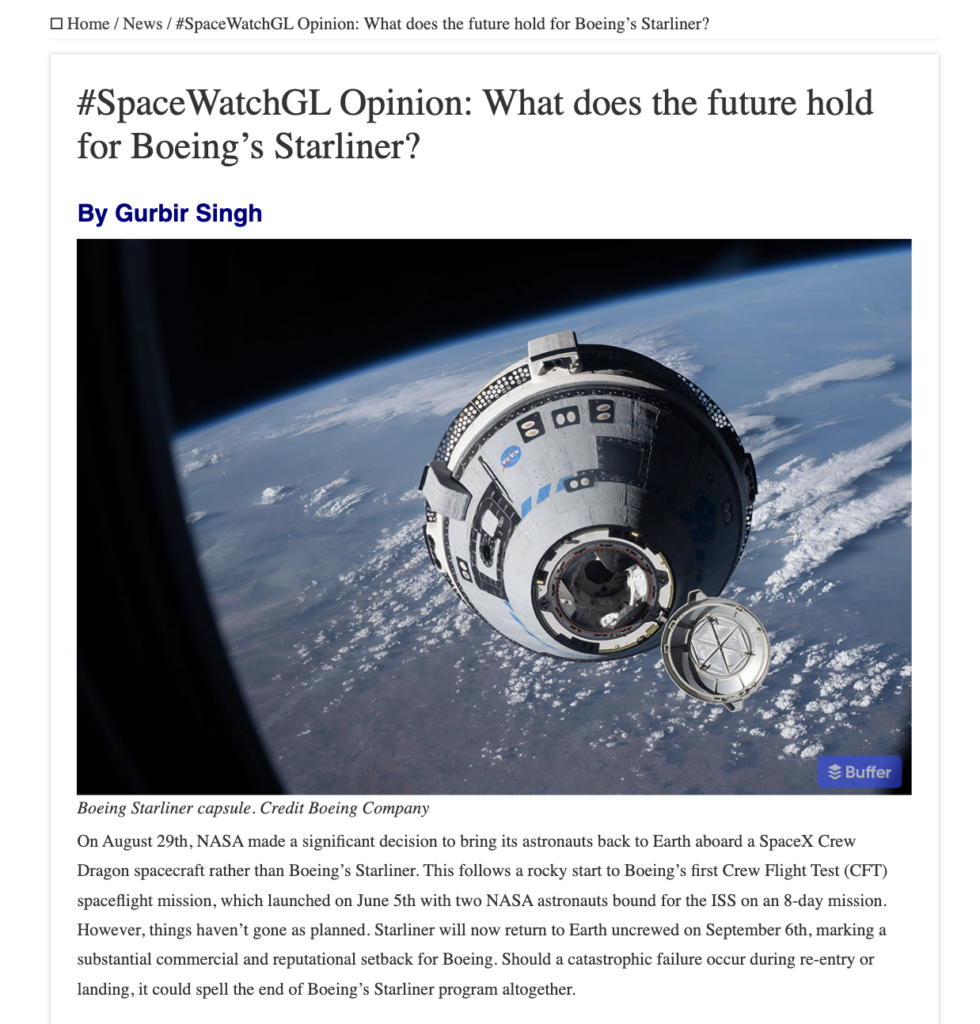On August 29th, NASA made a significant decision to bring its astronauts back to Earth aboard a SpaceX Crew Dragon spacecraft rather than Boeing’s Starliner. This follows a rocky start to Boeing’s first Crew Flight Test (CFT) spaceflight mission, which launched on June 5th with two NASA astronauts bound for the ISS on an 8-day mission. However, things haven’t gone as planned. Starliner will now return to Earth uncrewed on September 6th, marking a substantial commercial and reputational setback for Boeing. Should a catastrophic failure occur during reentry or landing, it could spell the end of Boeing’s Starliner program altogether.
Boeing has provided abundant assurance that Starliner is safe for a crewed return. After all, they have already returned Starliner from LEO to a safe, soft landing in New Mexico twice, once in 2019 and again in 2022. Why does NASA not feel assured?
There are four critical contributory factors. Perhaps the most visceral is NASA’s 2003 experience with the loss of a crew of seven during the ill-fated space shuttle Columbia’s return to Earth. If there are fatalities, it will be seen as NASA’s failure, not Boeing’s. Secondly, this NASA-Boeing commercial contract is a fixed-price one. Boeing, not NASA, will have to pick up the additional cost necessary to certify Starliner as operational. Thirdly, NASA has an alternative option, something that was not available in 2003: SpaceX. Why should NASA take the risk if it doesn’t have to? Lastly, with a comprehensive understanding of all the intricate and interconnected technical details, NASA knows more than we do and feels it has no other choice.
Multiple Failures
NASA and Boeing have acknowledged “multiple failures,” which is not unusual in a test flight. The previous Starliner flights (in 2019 and 2022) were not without failures. The two main problems with Starliner in this CFT have made it to the public domain: five helium leaks and thruster malfunctions. The helium leaks, known about before launch, were not deemed significant. Starliner arrived and docked successfully with the ISS on June 6th. Boeing engineers assessed the leak rates and concluded that the remaining helium could support 70 hours of free flight, but only seven were required. Starliner had sufficient margin for a safe return trip from the ISS.
Helium pressures the 20 Reaction Control Systems (RCS) for fine attitude control and 28 more powerful Orbital Manoeuvring and Attitude Control (OMAC) thrusters. All 48 are located in 4 units (each with 5 RCS and 7 OMAC) known as doghouses on the Service Module. The thruster malfunctions, specifically understanding their root causes, are the primary concern. When the OMAC thrusters are activated, they generate much more heat than expected. In the confined space of the doghouses, that heat is absorbed by the Teflon seals in the RCS, causing the seals to bulge and potentially disintegrate. The resulting debris can block the oxidizer supply to the RCS, resulting in lower thrust. Boeing engineers have replicated some of these symptoms in their ground tests. The uncertainty associated with repeated bulging of the seals during reentry appears to have motivated NASA to throw in the towel with Starliner. Starliner will return uncrewed on September 6th, and NASA astronauts Barry Wilmore and Suni Williams will return with SpaceX in February 2025.
This is perhaps NASA’s most consequential decision. NASA wanted two independent routes for crewed flights to LEO from the outset. Since the Space Shuttle was retired, NASA has spent about $11 billion on its replacement—the Commercial Crew Development Contracts. The lion’s share is almost equally split (SpaceX $5.5 billion and Boeing $5.1 billion). This includes 6 Boeing missions to the ISS and 14 SpaceX crewed missions to the ISS. SpaceX has completed 13 crewed return missions to the ISS, and Boeing has yet to complete its first.
Corporate Decline?
Following NASA’s decision, SpaceX will exploit Boeing’s uncomfortable reputational and commercial predicament. NASA did not take it lightly, and it was probably not informed solely by the quality of Boeing’s work on Starliner but by a broader recognition of Boeing’s performance over decades.
The first stage of the mighty Saturn V, which powered eight crewed Apollo missions to the Moon, was developed by Boeing engineers. From the same decade, the 1960s, Boeing has been a byword for safe aviation. The Boeing 737 and the 747 Jumbo have impressive safety records, not just in the US but globally. Perhaps the 1997 merger between Boeing and McDonnell Douglas shifted the company culture from safety and quality to profit and dividends. Confidence in the integrity of Boeing’s engineering declined further, with two fatal crashes in 2018 and 2019 of its new 737 Max aircraft, resulting in the loss of 346 lives.
Boeing’s difficulties are not restricted to aviation or Starliner. In early August, NASA’s Office of Inspector General published a report on the status of the Space Launch System (SLS) Block 1B. Boeing is the prime contractor for the SLS Exploration Upper Stage (EUS), where the cost has grown from $962 million to over $2 billion. The report found that Boeing’s quality assurance program is not compliant with NASA’s Quality Management System standard AS9100. Between September 2021 and September 2023, Boeing received 71 Corrective Action Requests and is now facing the prospect of financial penalties for non-compliance with quality control standards.
Critical Reentry
Despite media reports, NASA’s astronauts are not stuck, stranded, or abandoned. As the mission designation, Crew Flight Test, indicates, this is a test flight. Barry Wilmore and Suni Williams are space shuttle veterans. They are in no immediate danger and probably welcome their extended stay in space. It is very rare for a spacecraft that took people to space to return empty. In March 2023, the Soyuz MS-22 spacecraft returned to Earth uncrewed following safety concerns with an external cooling radiator on its service module.
The Service Module does not survive reentry, so Boeing engineers will not be able to investigate it further after it has returned to Earth. Firing all 28 thrusters during the uncrewed return will be essential for Boeing to collect additional data to inform the necessary modifications. That step may also result in unpredictable and potentially catastrophic failure. That unlikely event could vindicate NASA’s decision and mark the demise of the Starliner program.
I think Boeing engineers will succeed in returning the CFT safely to Earth. On the current schedule, on September 6th, Starliner will undock from the ISS at 6:04 and land on the 7th at 12:03 EDT. Space is hard for Boeing right now, but it will have moved on in a few years. These profound difficulties will be interesting footnotes in Boeing’s developmental history.
Episode 114 – Chris Riley and The Moonwalkers: A Journey with Tom Hanks
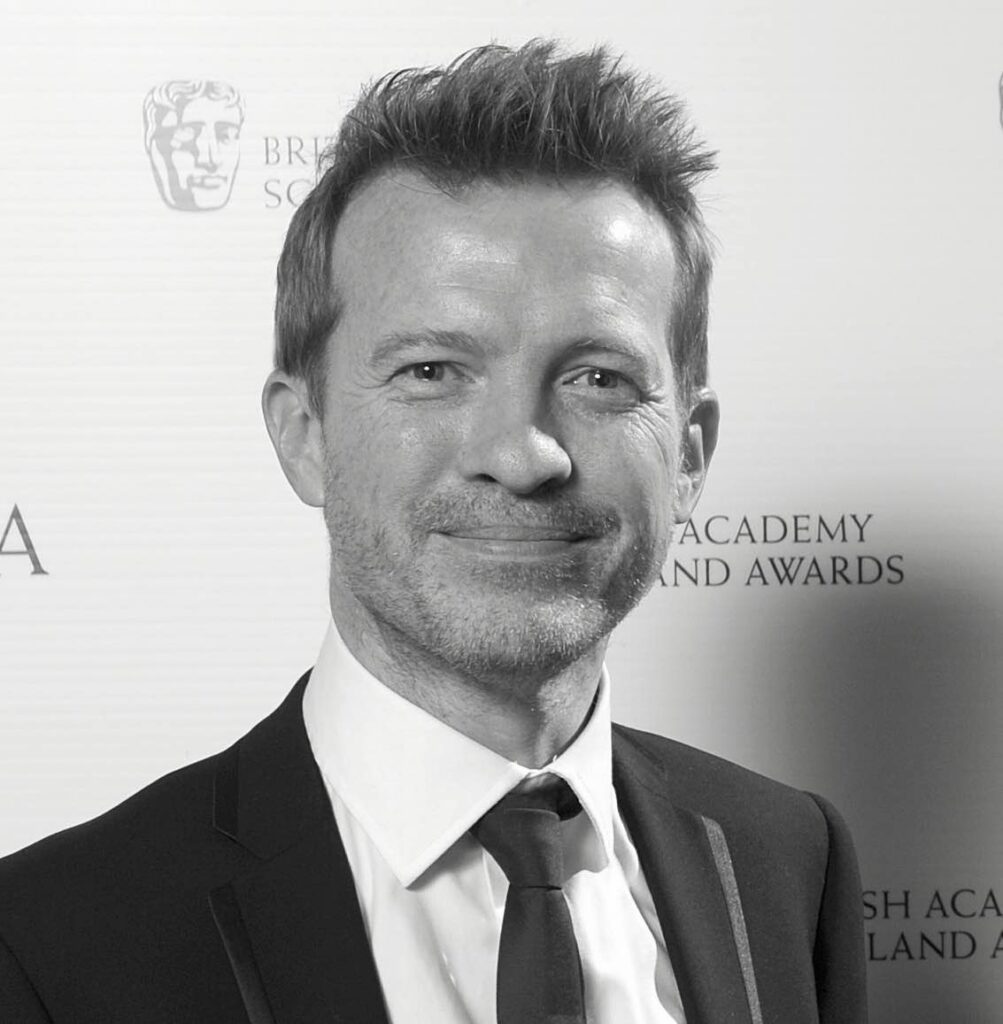
Christopher Riley was trained as a geologist, but his greatest skill is his imagination. He is known for his books and as a filmmaker, specialising in documentaries including In the Shadow of the Moon, First Orbit (on Youtube) and Director’s Cut of Moonwalk One (Amazon DVD)
His latest work, a 50-minute show, The Moonwalkers: A Journey with Tom Hanks is an immersive audio-visual experience in a unique venue in the centre of London. The visuals are provided by 26 high-res Panasonic laser projectors that produce giant videos and still images that wraps around multiple walls. The exceptional audio is powered by the German-made Holoplot speaker system comprising 1600 speakers. If you ever wondered what comes after Imax – this is it.
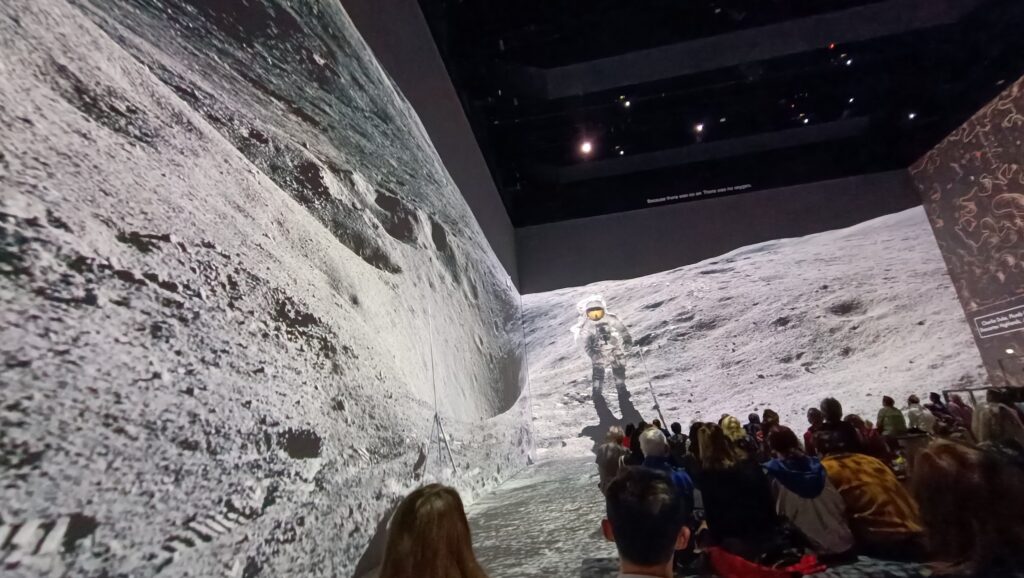
The script was written by Tom Hanks and Christopher Riley. This unique audio-visual experience of the Apollo story is available only in London and only until 13th October 2024. More images and clips here.
The Space Race, that started with Gagarin’s spaceflight on April 1961 and arguably ended in July 1969 with Neil Armstrong and Buzz Aldrin walking on the surface of the Moon. It is perhaps the most astonishing episode of human progress. It was an epic leap because it was more than just a technological advance. It may have been borne out of national rivalries but its legacy touched our individual perceptions of each other on earth and beyond. .
In this conversation, recorded in London he talks about his writing, filmmaking and how the idea of The Moonwalkers came about. Parts of this interview were transmitted in my bi-weekly radio program on allfm.org on 28th May 2024.
Podcast: Play in new window | Download (Duration: 56:30 — 103.5MB) | Embed
Subscribe: Apple Podcasts | Spotify | RSS | More
The Moonwalkers: A Journey With Tom Hanks
This post is based on an article that will appear in the Summer 2024 edition of the Newsletter from the Open University Physics and Astronomy Society.
Out of the twelve men with personal experience of walking on the Moon between 1969 and 1972, only 4 remain. It was a unique event in human history that by chance occurred in my lifetime. Carl Sagan’s words captured this exceptional nature saying “In all the history of mankind, there will be only one generation that will be first to explore the Solar System”.
Moonwalkers: A Journey with Tom Hanks is an immersive audio-visual experience in a unique venue in the centre of London. The 50-minute show is centred on the recollection of the then 13-year-old Tom Hanks’ experience of seeing the first men to walk on the surface of another world. The script was written by Tom Hanks and Christopher Riley. Riley is a well-known author and filmmaker, specialising in documentaries on the early phase of the Space Age (i.e. First Orbit available on Youtube and Director’s Cut of Moonwalk One DVD) on Amazon.
The Space Race was a product of the Cold War and ostensibly a race between the mighty political ideologies of Western Capitalism and Eastern Communism. But when it came to the extraordinary achievement, seeing the men walk around the Moon on a tiny black-and-white screen, it transcended national identities and political ideologies. At the time, around a quarter of the USA population (53 million) and around a sixth of the global population (around 650 million) tuned in.
It will not see it Netflix, BBC or even Youtube because the immersive experience only works in a specialised multiscreen venue, like the Lightroom in London. The lightroom is like a large warehouse. During the 50-minute show, multiple projectors dynamically project multiple images on all four walls and the floor. Seating is a series of low-level cushioned benches without a headrest and standalone cushions to sit on the floor. Once the show starts – you have to look all around you – including behind you. Best not to sit too close to the front. Subtitles are included – out of the way at the top of the front wall. Taking the odd picture or video on your phone is not prohibited. I am including here a few of the images and videos I captured during my visit.
Tom Hanks, who has had a fascination with space since childhood, narrates the show. He shares his wonder of experiencing the Moon landing as a teenager. He played Jim Lovell, the commander of the aborted Apollo 13 mission, in his 1995 film – Apollo 13. He co-produced the 1998 12-part drama, From the Earth to the Moon. The series covered the space programme from the Mercury programme to the Apollo 17, the final Apollo mission and went on to win multiple nominations and awards.
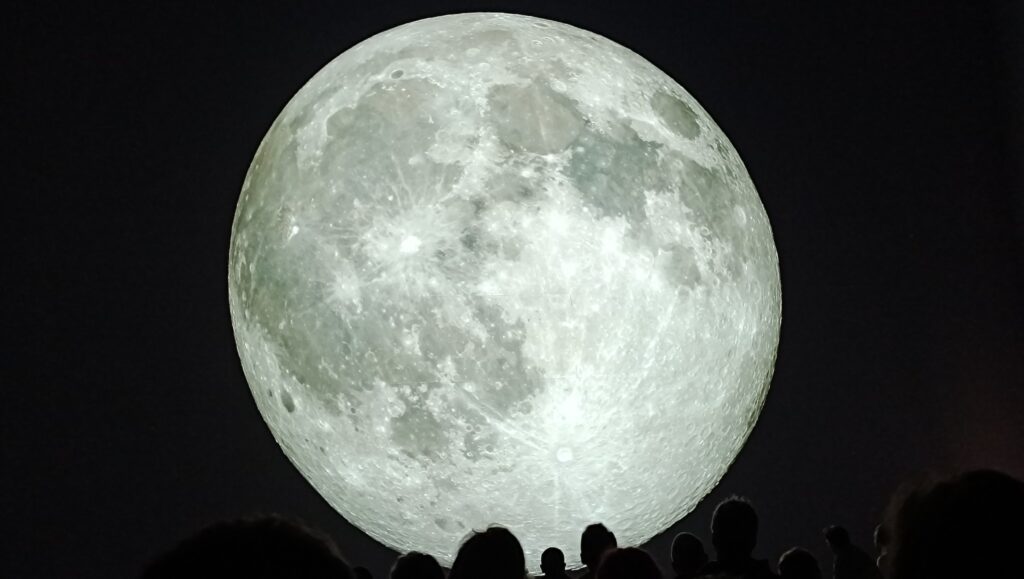

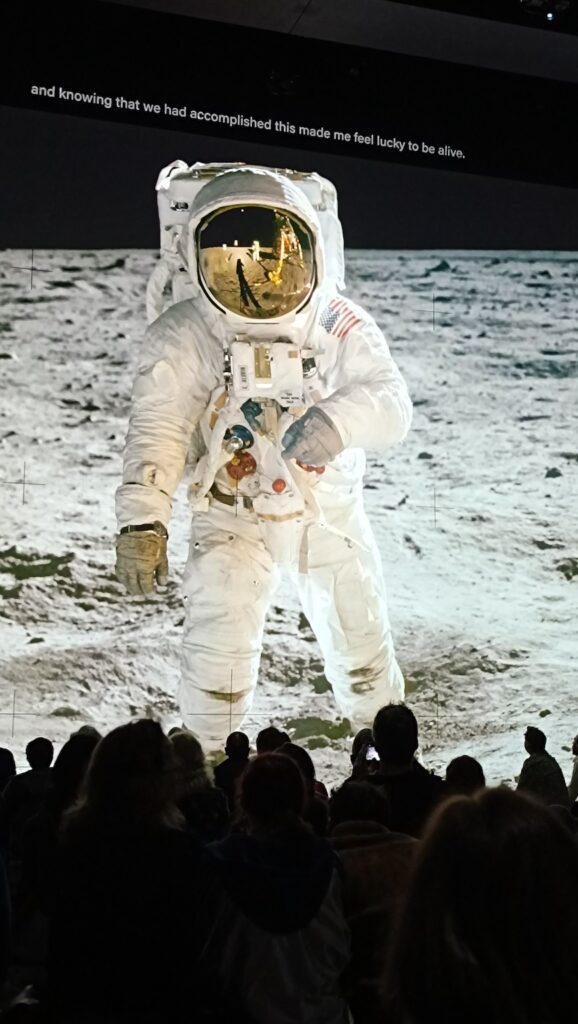

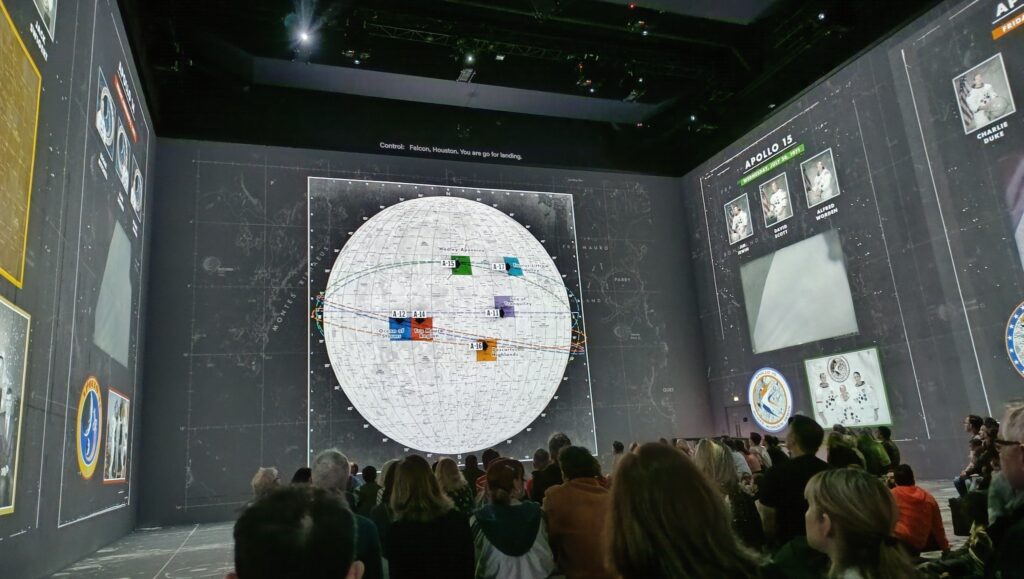

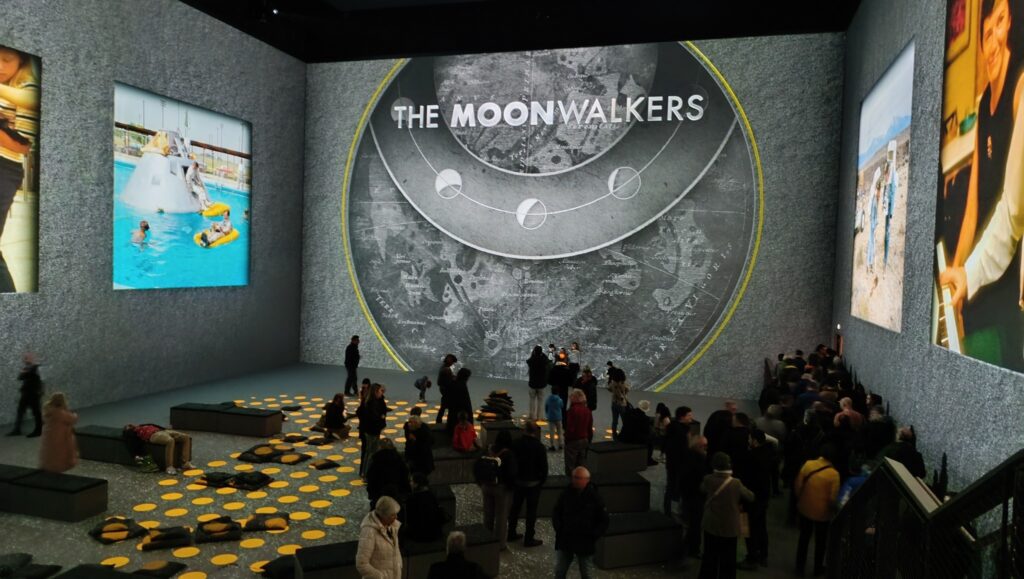
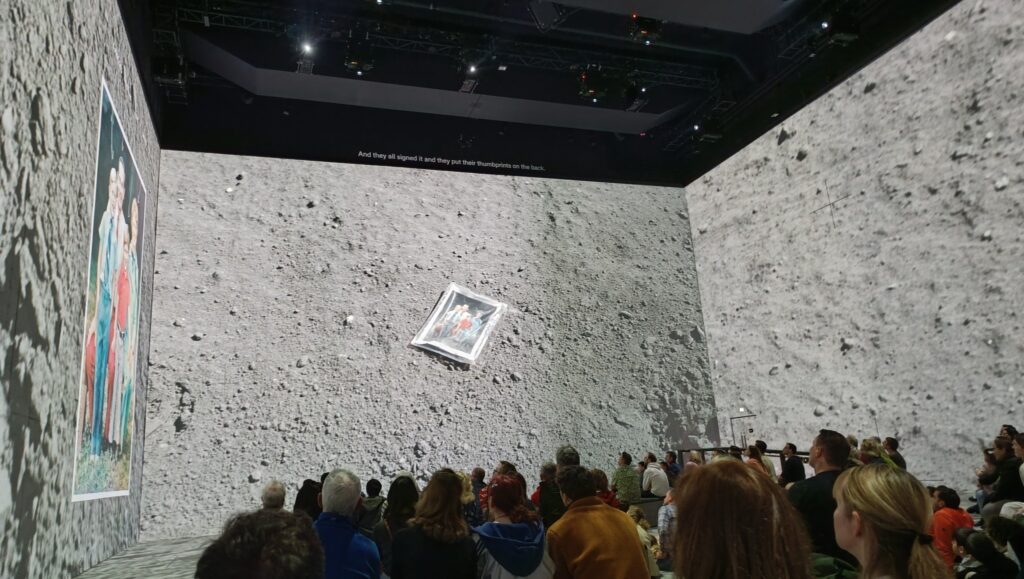


The visuals are provided by 26 Panasonic laser projectors but I felt there were many more. The high quality of the images and video was in part the contribution of Andy Saunders, author of Apollo Remastered. He is credited as a Collaborating Producer. He produced the single giant pictures that wraps around multiple walls. Despite two walls meeting at right angles, there is very little sense of distortion. In addition to the video on the main front wall, throughout the show, numerous stills of people, spacecraft and instrumentation are displayed simultaneously. Occasionally with multiple videos. It is the cumulative impact of these multiple threads of audio, stills and video that evoke the emotional response and the immersive experience.
I could not see where the speakers were so assumed they were high up in the ceiling. But not so. Lightroom London is one of three venues around the world kitted out with a German-made Holoplot speaker system. Two panels are embedded, one inside the front and another inside the back wall. Each panel has a matrix array module of 800 speakers each. A little like phased array antennas, the matrix array modules can generate multiple beams of audio, in the vertical and horizontal plane. Just as what you see depends on where you are, what you hear is also finely tuned to location. You are invited to pay once but stay for multiple screenings. If you do – try different locations within the venue. Tom Hanks’s narration, rocket launch and the specially commissioned score by the composer Anne Nikitin provide a lavish emotional experience. The speakers rumble when the Saturn 5 launches and your chest joins in.
The depiction of the Apollo 11 landing sequence was disappointing. I know footage of the descent from the Lunar Module exists but is not shown here. This was a choice to illustrate Mission Control’s limited perspective at this critical phase of the mission. I would also have liked to have seen more footage from the Apollo 13 mission, given Hanks’ back story. I felt the title – Moonwalkers, undercut the contribution of the other 12 astronauts who went to the Moon but never made it down to the surface.
I was surprised to see the long queue but then again I was attending the 4 pm show on a Saturday. I enjoyed it but that was pretty much a given. At the end of my screening, the audience clapped. So I guess most of them did too.
Currently, the Lightroom in London is the only place you can see this but there is a desire to take it elsewhere where suitable venues exist. The £25 per adult (there are concessions) entry is typical of London. But pricey for non-Londoners. They will need to consider the additional cost of travelling to London.
This is a unique opportunity to experience an exceptional achievement of the 20th century played out using 21st-century technology. It is timely. Humans from the Earth are returning to the lunar surface in in the next year or two. . For all the information and to book tickets see Lightroom.uk
Episode 108 – NASA’s Europa Clipper Mission
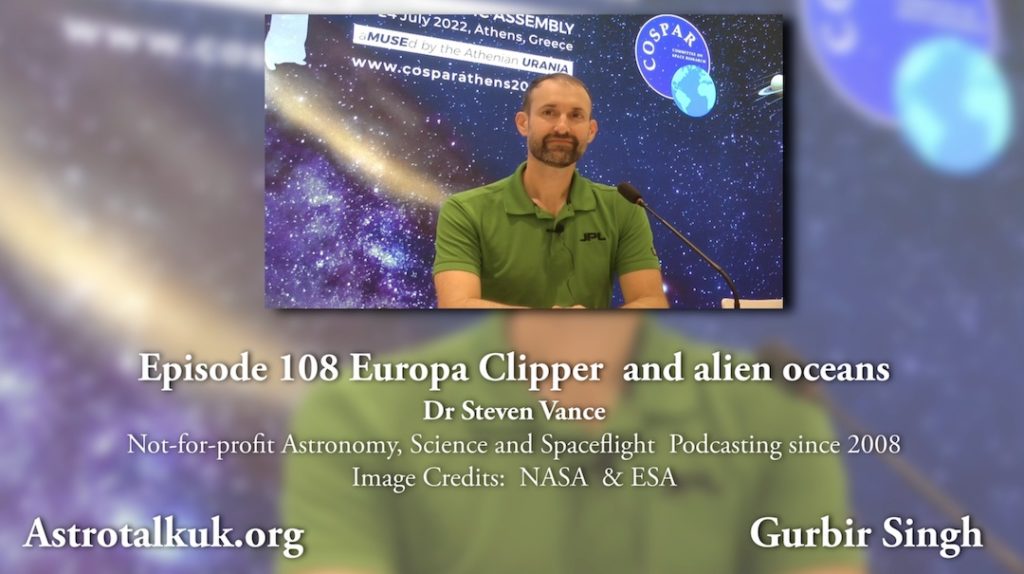
The Europa Clipper mission, due for launch in 2024, will arrive and orbit Jupiter in 2030. The third spacecraft to do so after Galileo (in 1995) and Juno (in 2016). The Pioneer and Voyager missions were flybys. The primary objective, as the mission name suggests, is the investigation of Jupiter’s Moon, Europa. Called Europa-Clipper after the 19th-century merchant ships that shuttled between ports at the high-speed then available.
Europa-Clipper will orbit Jupiter, not Europa. This is one of Jupiter’s moons that shows strong evidence of a sub-surface water ocean. During its four-year mission lifetime it will flyby Europa dozens of times looking for conditions suitable for life.
Dr Steven Vance talks about the mission’s goals and current state of readiness. This was recorded in Athens during Cospar 2022. He was the scientific advisor to the 2013 film Europa Report.
Podcast: Play in new window | Download (Duration: 25:49 — 29.7MB) | Embed
Subscribe: Apple Podcasts | Spotify | RSS | More
